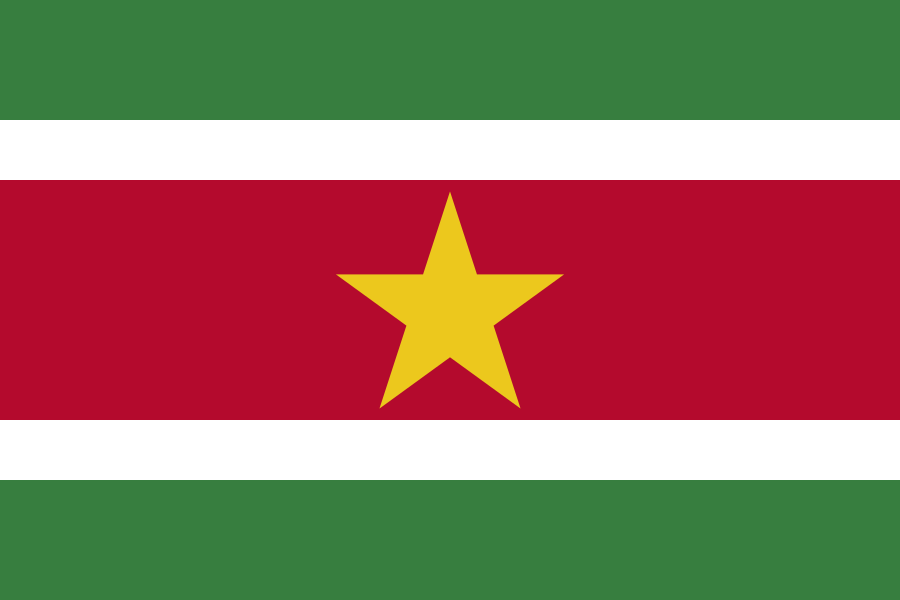The Suriname flag features three primary colors: Green, White, Red, Yellow. The table below showcases the common and popular codes for these colors in HEX, RGB, and CMYK formats, along with Pantone (PMS), RAL, and NCS (Natural Color System) references. Remember, HEX and RGB codes are ideal for digital projects and web design (including HTML and CSS), while CMYK values are tailored for printing purposes.
The flag of Suriname is a vibrant and meaningful symbol that represents the nation's unity, cultural diversity, and aspirations for peace and progress. Here is a detailed description of its design, symbolism, historical context, and overall significance:
Design and Elements
Colors and Layout:
- The flag consists of five horizontal stripes. From top to bottom, the stripes are:
- Green
- White
- Red (wider than the others)
- White
- Green
- In the center of the red stripe is a large yellow five-pointed star.
Proportions:
- The flag’s width-to-length ratio is typically 2:3.
Symbolism
Colors:
- Green Stripes: Represent the fertility of the land and the country's natural resources.
- White Stripes: Symbolize peace and justice.
- Red Stripe: Represents progress and the struggles and sacrifices made to achieve it.
Yellow Star:
- The yellow star in the center of the flag signifies unity and hope. It represents the guiding light of progress and the aspiration for a brighter future for the nation.
Historical Context
Adoption:
- The current design of the flag was officially adopted on November 25, 1975, coinciding with Suriname's independence from the Netherlands.
Evolution:
- Prior to independence, Suriname used a flag featuring five stars and stripes that symbolized the different ethnic groups in the country. The new flag design, with a single star, was intended to unify these groups under one national identity.
Historical Significance:
- The flag reflects Suriname’s journey towards independence and its desire to forge a unified national identity despite its ethnic diversity.
Overall Significance
The flag of Suriname is a powerful emblem of national identity, unity, and the country's aspirations for peace and progress. It is prominently displayed during national holidays, official ceremonies, and international events, symbolizing Suriname’s sovereignty and its place in the global community.
Cultural and National Identity
The flag serves as a unifying symbol for the people of Suriname, reflecting their shared heritage, pride in their nation’s achievements, and commitment to building a peaceful and prosperous future. It embodies the spirit of unity among the country's diverse ethnic groups and their collective hope for continued progress.
Unique Feature
- Central Star:
- The yellow five-pointed star is a distinctive and central element of the flag, symbolizing unity and the guiding light for the nation’s progress.
In summary, the flag of Suriname is not only a representation of the nation’s historical and cultural heritage but also a symbol of its unity and aspirations for the future. It embodies the spirit, resilience, and unity of the Surinamese people, celebrating their past while looking forward to continued growth and prosperity.
